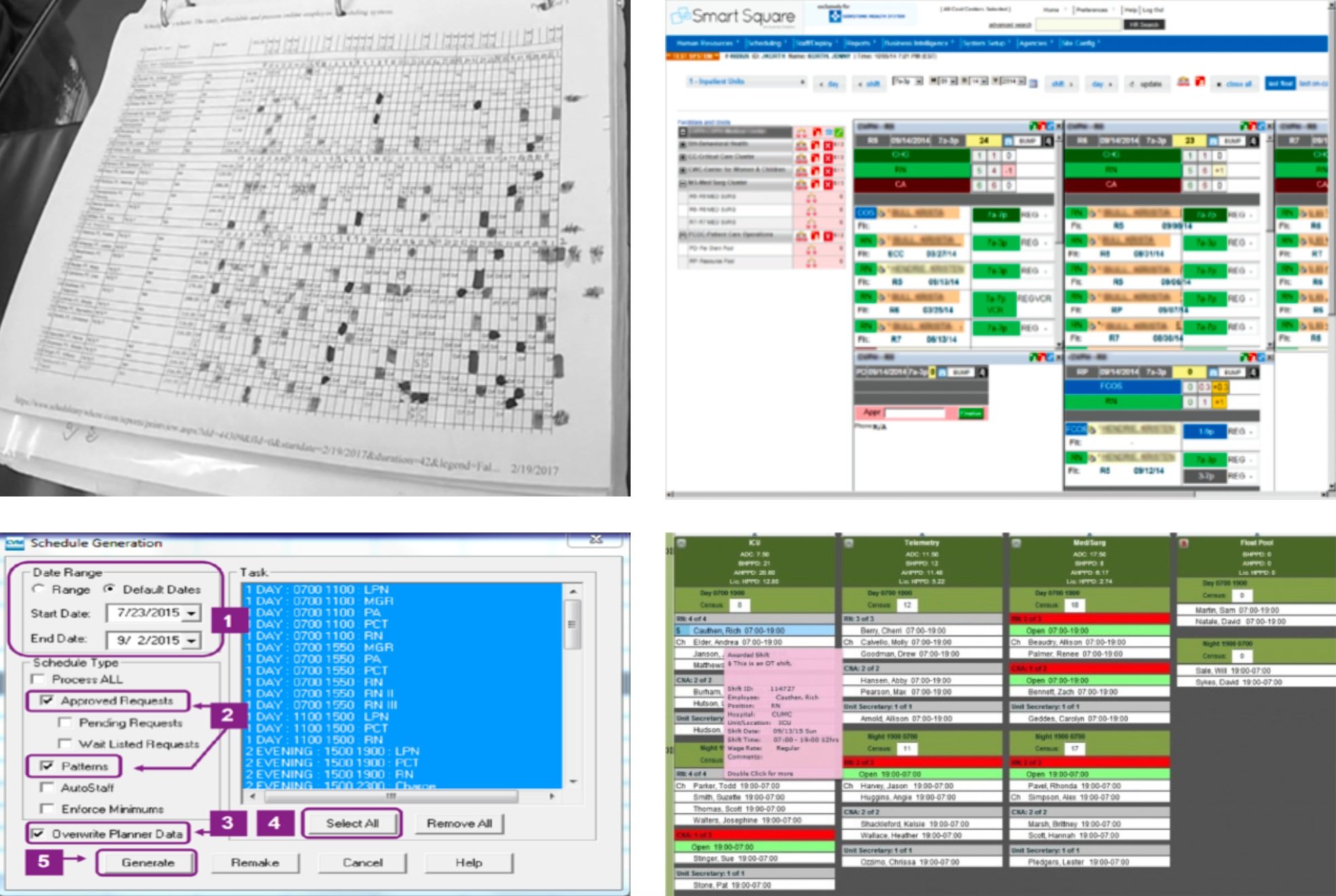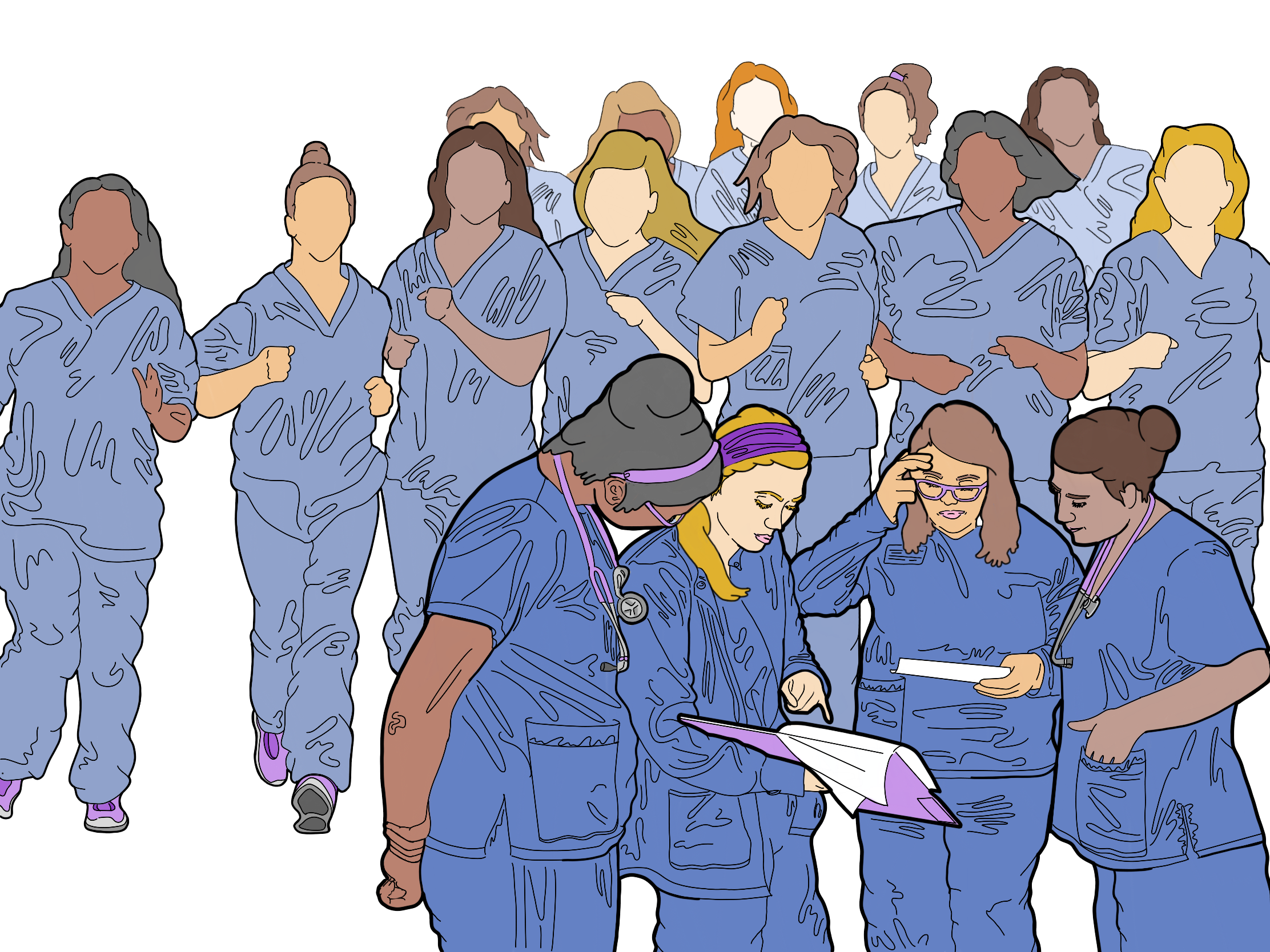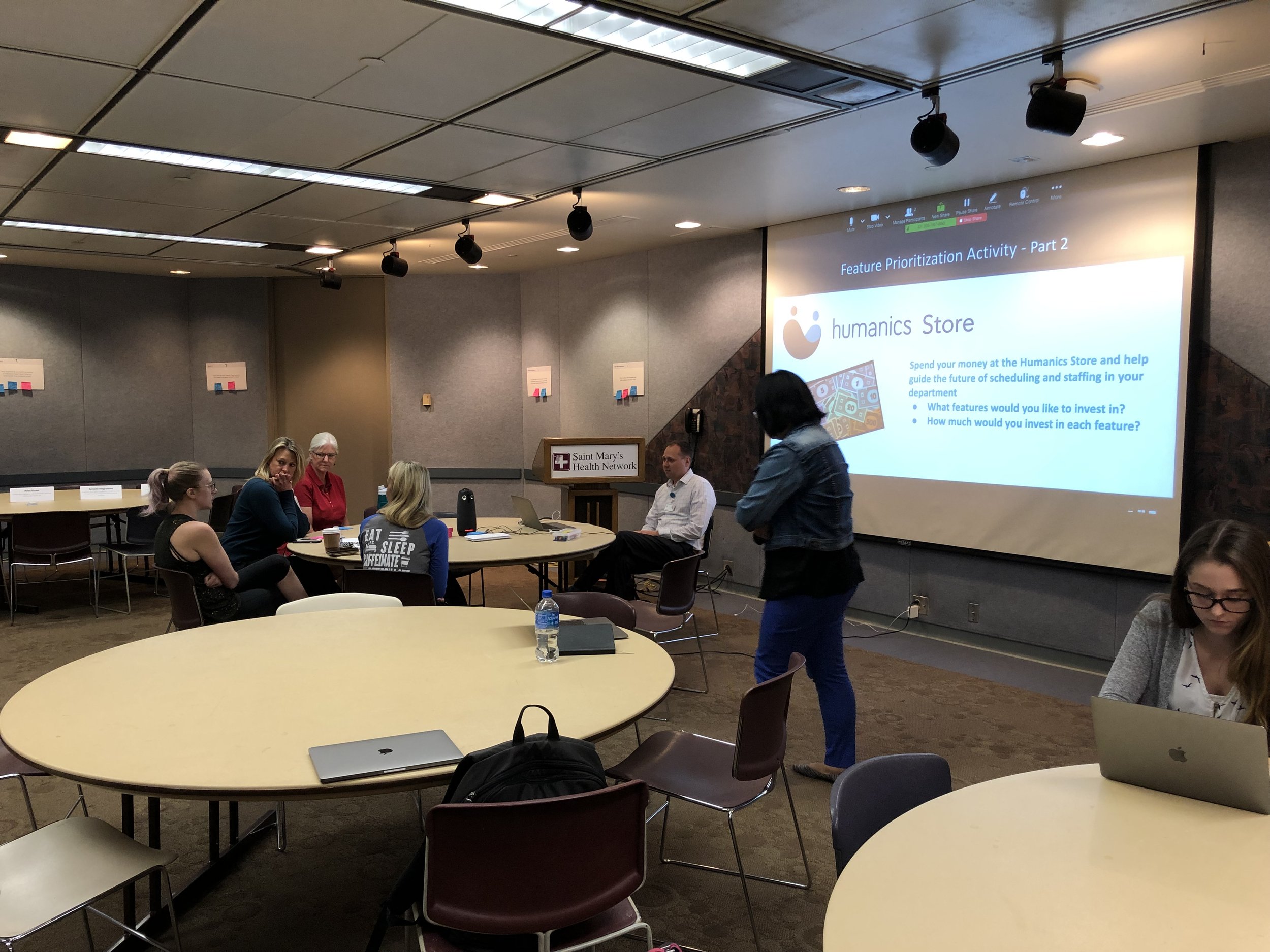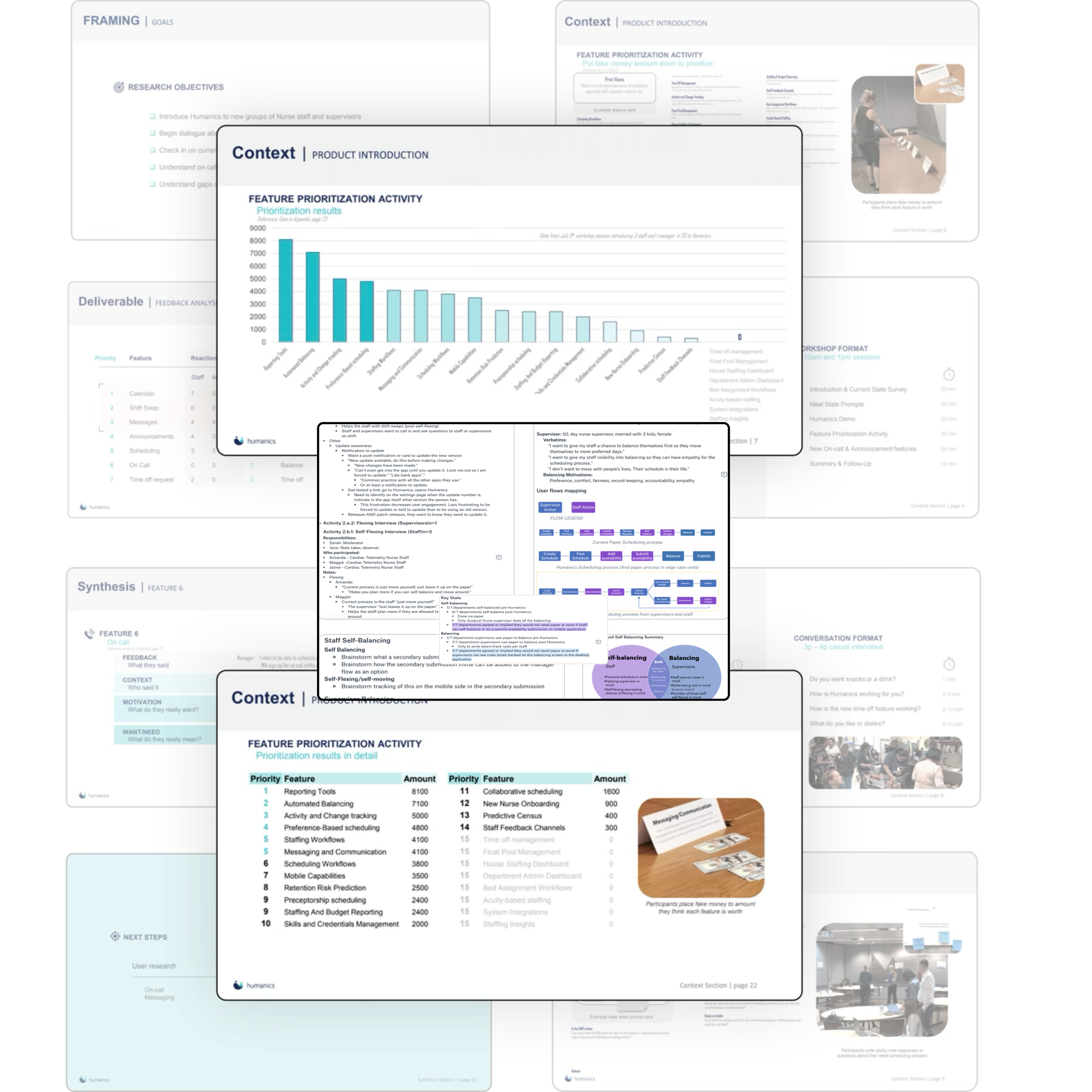Humanics | Nurse scheduling platform solution
Background
About the product
Humanics is a workforce engagement platform for teams of nurses to develop, manage, and track department schedules. Nurses can take better care of their patients and themselves when they spend less time worrying about their schedules.
My role
Design research and strategy | Lead research on balancing practices. Inform logic and architecture of smart balancing algorithm.
User experience design | Responsible for design system top interactive title bar dynamic navigation components, dynamic calendar print components. Aid in scheduling table iconography elements.
Product design team
Siemens Healthineers digital incubator design team. Robert Campoy | Art direction and design system; Chase Airmet | User experience design, information architecture, and desktop experiences; Godwin Johnson | Visual design, motion design, prototyping, and mobile experiences; Erin Ballard | Design research (on leave during my time with the team); Ben Little | Business strategy; Egan Schulz | Design management.
Why Scheduling?
Challenge
Payroll and scheduling are the two most common concerns cited by RNs. Supervisors and nursing teams spend hours creating and managing schedules, costing the facility a significant amount of time, resources, and money. It takes 8 hours on average for managers to balance a single schedule. As the nursing shortage grows due to reasons such as burn out and increasing overtime, problems with scheduling will become increasingly worse.
Approach
By understanding current hard to use solutions and implementing frequent user research with nurses, understanding can inspire a more intuitive and manager-friendly digital solution. Current scheduling processes through complex online systems are outdated and difficult to manage. These systems are stressful, requiring excessive clicking, which wastes managers' time and energy. Most scheduling is still done on paper, making access for staff nearly impossible. The organization and workflows for schedule creation can be improved.
Why Humanics?
Solution
A digital nurse scheduling application that alleviates the issues with scheduling and staffing so that nurses can focus on caring for their patients.
Staff Nurse experience on mobile
The current Humanics iOS and Android applications serve as mobile solutions for nursing staff members. It allows staff to input availability, view their schedule, pick up shifts, swap shifts, and request time off.
Manager experience on desktop
The desktop website application serves as an online scheduling and staffing solution for nursing managers. Supervisors can balance schedules, open and close schedule requesting periods, transfer or add staff, post announcements, fill open shifts, approve time off, or review shift swaps.
Once upon a navigation
Project objective
The section title bar, functioning as a secondary navigation, should be consistent within each feature and workflows within each navigation section.
Role
Responsible for crafting enhancements for design system core components such as top interactive title bar dynamic navigation layers, dynamic calendar print features, and aid in iconography such as the dynamic table icon elements.
Outcome and Impact
Navigation and ease-of-use is now optimized through consistency in all section title bars in the desktop environment. Harmonious design and development achieved with the section title bar visuals as well as functions including search, filters, titles, buttons, and menus.
If you give a nurse a print modal…
Project objective
Managers need to print the full or day schedules to post up on bulletin boards during shifts. They need to be able to easily select the full schedule or a day within the currently-viewed calendar schedule period.
Role
Responsible for researching and understanding staff printing needs, and crafting dynamic calendar print functionality.
Outcome and Impact
A dialogue modal accessible within the calendar tab with a full or day schedule selectable through a segmented control. The modal auto fills the schedule periods’ pre-filtered or selected information from the currently opened calendar tab.
Schedule balancing, nurse requests, and manager burn out… Oh my!
Project objective
Understand staff and manager workflows related to balancing and staff self-balancing to get users off of paper and fully on digital scheduling.
Outcomes
A research and development project to implement a smart balancing rules engine by adding a facility-facing desktop application and adjusting the supervisor and staff existing applications.
My role
Lead for manager balancing and staff self-balancing practices to inform the overall logic for and user experience architecture of a smart balancing algorithm.
Key collaborators
Jane Beltran, Brian Gammon | Customer engagement, clinical expertise, and workshop co-facilitation; Mirko Buholzer, Cihan Cetin, Julia Wagner | Development requirements; Ersel Kullolli | Product requirements; Rami Ajjuri, Jordan Sun | Business development; Robert Campus, Erin Ballard | Legacy research
From learnings to outputs
Facility processes are more separate and removed from the staff and supervisor scheduling workflows; whereas staff and supervisor processes and interactions are closely tied together. Therein the facility rule configuration should be independent from the staff and supervisor balancing rule processes during current schedule period workflows. However, onboarding configuration workflows should have a top-down dependency structure to create an initial system that supervisors can work off of and facility staff can adjust after the initial configuration. Thus, we next determined the respective supervisor/ staff algorithms to inform final wireframes.
Outcome and Impact
Final outputs included final wireframes for the facility-facing desktop application as well as a redesign balancing wireframes and interface in the existing supervisor-facing desktop application.
At this point in the program, initial wireframes were created to review with technical and product team leaders. However, the digital incubator and entire bay area team was let go and closed thus resulting in the conclusion of this project and Humanics as a whole.


























